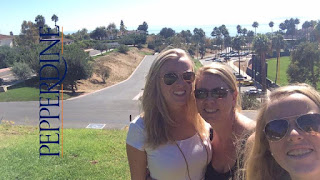What is Orangetheory Fitness?
Orangetheory Fitness offer 60-minute workout sessions split into intervals of cardiovascular and strength training with heart rate monitors to track intensity and maximize metabolic burn. The goal is to increase energy, get visible results and burn more calories, even after leaving the studio. Their motto is: Work for one hour, burn for 36.
They are a boutique fitness gym. Boutique fitness consists of a small gym, group exercises, focused workout and premium prices. Boutique fitness gyms have grown exponentially in the past few years. Participation has doubled in one year from 21% in 2013 to 42% in 2014. Boutique studios have been adding new studios at a rate of 450% per year since 2010.
Target Market?
Their target market is men and women ages 18-55. They focus on attracting upper-middle class clients with a competitive drive.
Overall Marketing Strategy
Right now Orangetheory Fitness focuses on hyper-local targeting, their website and myallout.com, phone and text marketing, and having potential clients come in to "try them for free."
Current Social Media Strategy
Orangetheory Fitness mainly focuses on their Facebook and Instagram. Right now their Facebook has 1,881 likes, while their Instagram has 764 followers.
I believe that their social media strategy can be stronger, and they can also leverage more platforms.
Platform Recommendations
Facebook:
- Connect Spotify account to Facebook so that customers are aware and can utilize playlists played in the studio
- Feature coach biographies on Facebook, with a link to the website to drive traffic
Instagram:
- Create a #myallout campaign to drive user generated content
- participating in this campaign could be rewarded with surprise and delight
- they could use influencers to get it started
- reap a great ROI
- Have less wordy posts, while still being inspirational
- Showcase posts that appeal to all genders
Snapchat:
- Start a local Snapchat account for Athens
- Have a "Never Miss a Monday" Snapchat geofilter to increase engagement
- Post in-class videos on their Snapchat story to give customers or potential clients and up close and personal look
- Create consistent posts so users can stay updated in real-time
Twitter:
- Start a local Twitter account for Athens
- Tweet inspirational quotes and quick fitness tips to showcase brand culture, which will drive up engagement
- Tweet the latest workout songs that are played in class
- Use it to boost word-of-mouth

Sources
































